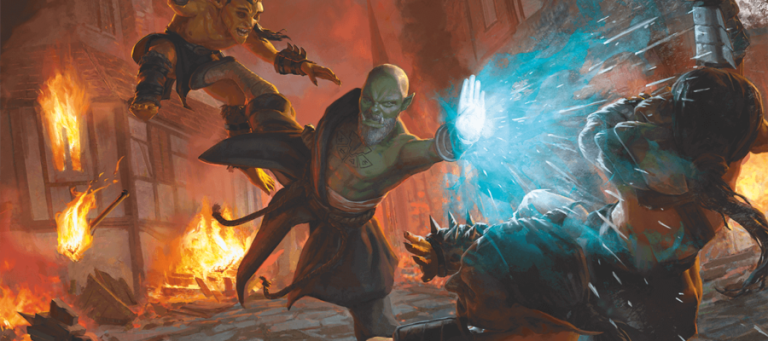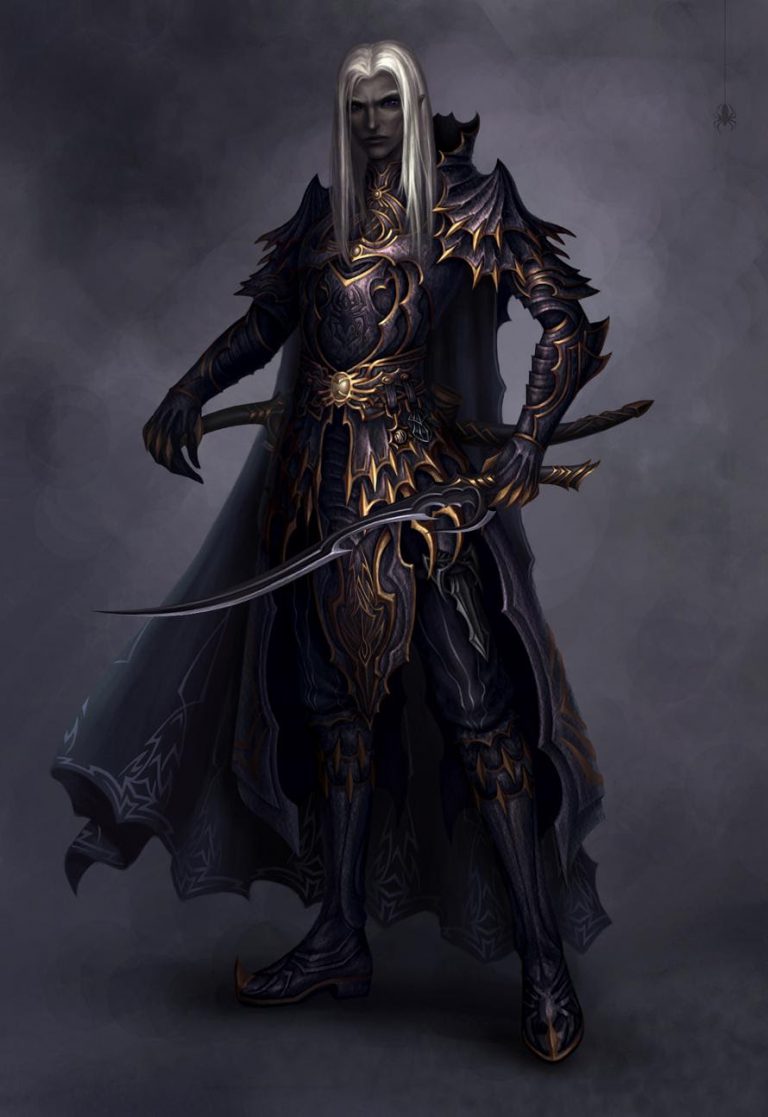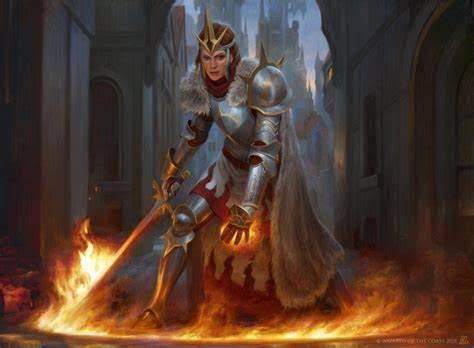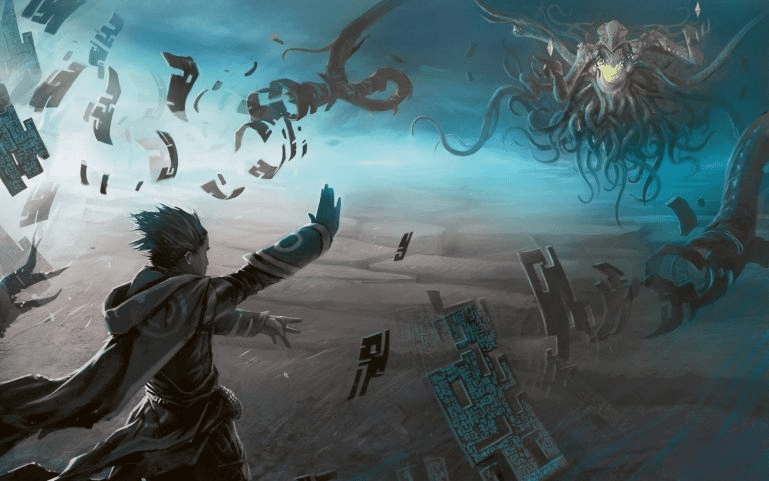D&D 5e: Samurai Fighter Guide

D&D 5e: Samurai Fighter Guide
Role in the Party
Warriors without peers, the Samurai subclass focus their lives around their martial prowess, learning the arts of sword and bow together, and are willing to put their very existence on the line if the situation demands.
But a Samurai isn’t just a Fighter. The root of the word is service, and Samurai were expected to be perfect courtiers and mannered gentlemen as well as superlative warriors. When out of the dungeon and out of armor, it’s common to see characters like these rubbing shoulders with the rich and powerful, lubricating the wheels of society and picking up leads on where their party should go next.
This guide breaks down the Samurai Fighter subclass, several ways to build one, skill choices, feat selection, and other important factors you as a player need to know. Let us begin.
Epic
Good
Meh
Bad
The Samurai Fighter subclass is found in Xanathar’s Guide to Everything. Click here to pick up your own copy of Xanathar’s Guide to Everything!
Samurai Features
Bonus Proficiencies: A free skill proficiency from a small, thematic list, or a free language. Languages are less relevant than skills, and later abilities give bonuses to skill use. Take Persuasion if you don’t already have it. It’s especially important later.
Fighting Spirit: From level 3, the Samurai can spend a bonus action to gain Advantage on all attacks until the end of the turn, and a small amount of temporary HP, (5, going up to 10 at level 10, and 15 at level 15.)
The temporary HP is fine, but not game changing. However, free Advantage whenever it’s needed is incredibly powerful and lets the subclass just turn on the damage against key enemies.
The ability can only be used 3 times per day at low levels, which isn’t a lot, but this is still incredibly powerful and fluffy, and well worth building around.
It’s worth pointing out that this ability does restrict the Samurai in fighting styles. Two-weapon fighting needs a bonus action available to be efficient, so to maximize damage, many Samurai are going to want either a big two-handed weapon or a longbow. Martial polearms are also a reasonable option.
Elegant Courtier: From level 7, the training of the Samurai shines through. They use their WIS modifier on Persuasion checks, as well as CHA.
On top of this, the Samurai also gains proficiency in WIS saves.
These are both great abilities. Persuasion is the most used, and most useful, social skill by far, and gaining a bonus to it is incredibly handy, especially one that doesn’t use CHA, which is useless for this class besides social skills.
A free save proficiency is also amazing. That’s literally an entire feat for free. WIS saves also tend to be linked to some of the worst effects in the game, so they’re very important to pass. You should pump WIS as a tertiary stat, is what this ability is saying.
Tireless Spirit: From level 10, whenever the Samurai rolls initiative, if they have no uses of Fighting Spirit left, they gain one use.
This is great, always ensuring that the character has at least one use of its key ability in every single combat encounter. Pop it turn one and charge in. As it should be.
Rapid Strike: From 15th level, the Samurai can unleash an almighty flurry of attacks whenever they’re using their abilities.
If the Samurai has Advantage on an attack, they can choose to attack once without Advantage in order to make another free attack roll, once per turn.
This is just another great damage dealing ability. Attacking twice is mathematically superior to rolling twice to hit. You’re rolling the same amount of dice, but can land two attacks and deal double the damage if both of those attacks hit.
Better still, there are no limits on uses. As long as the Samurai can gain Advantage from somewhere, they can make an additional attack, entirely for free, every single turn.
Strength Before Death: At 18th level, when the Samurai takes damage that would reduce them to 0 HP, they can spend their reaction in a burst of adrenaline and violence of action.
Mechanically, this is represented by the Samurai being granted an extra turn that directly interrupts everything else happening. The Samurai is free to act during this turn as normal, with the only proviso that taking damage forces death saves, and if they finish the interrupting turn still at 0 HP, they then fall unconscious.
This is a fantastic ability. One that’s incredibly in character as well as effective. It lets the Samurai unleash another burst of attacks to kill its enemy before falling unconscious or perhaps take a tactical retreat action to heal themselves. (Shameful Display!)
One thing that’s absolutely worth pointing out is that the Fighter’s Second Wind ability is a bonus action heal. The Samurai’s fighting styles tend to avoid using that bonus action. So, realistically, the character should always have a 1d10+level HP boost on hand whenever Strength Before Death kicks in, as long as they haven’t already used it for some random reason. Just a thought…
Strengths
The Samurai is one of the most effective DPS characters in the entire game. From level 5, it can throw out 4 attacks in a single round, all with Advantage, probably boosted by offensive feats and damage bonuses. At later levels, that scales up even higher, until the build can throw out an entirely ridiculous 9 full-power attacks in a single 6 second turn.
That’s paired with the ability to activate a combined offensive and defensive buff, which from mid-levels is realistically available in every single combat encounter. All of this added together results in a character that can be pointed at a group of enemies and be confident in its ability to deal with them, no matter what that encounter contains.
That’s something the Samurai, and the Fighter in general is great at. Consistency. There might not be flashy spikes of damage like a Paladin or a Rogue, or a devastatingly powerful single spell like the casters can throw out. But turn after turn, the Samurai will deliver effective damage and take hits right back, long after other classes have run out of resources, HP, and the will to live.
The Samurai can also be built to be a surprisingly effective party Face, gaining the ability to use WIS for its Persuasion proficiency and an extra skill slot. That, plus its other skills, mean that the Samurai is much more useful than a lot of Fighters in the non-combat 50% portion of the campaign.
It’s also worth pointing out that the Fighter’s base kit is uniquely positioned to make it one of the best jumping-off points for builds and multiclassing in the entire game. Everything the Fighter does is build-agnostic, offering buffs that every single class in the game will happily use, with several natural break points throughout its levels. If you have a build idea, you can probably get somewhere close with a few levels of Fighter as a starting point.
Weaknesses
The first weakness of the Samurai subclass is the slight railroading in weapon selection. The abilities on offer lock off effective two-weapon fighting, which is a shame as Samurai wore two swords. The boosts to attacks and damage also emphasize taking the biggest weapon with the biggest dice you can, mostly two-handed weapons or longbows. That’s all well and good, but it means that the Samurai’s combat styles are locked from subclass choice.
It’s also slightly unfortunate that the class just doesn’t have the same types of interesting abilities as equivalents like the Battle Master or Rune Knight. There are fewer decision points to make regarding what to do on a turn by turn basis. The thought process of a Samurai in combat will tend to be along the lines of ‘Is this the turn I scream a warcry and murder everyone, or is that next turn instead?’
The other major weakness of the Samurai is one that most Fighters share. Lack of flexibility. The class does what it does, and once a choice is made, it’s locked in, unless time is spent to retrain. There’s no spell list, ritual casting, or extensive skill list. You’re a Samurai. You chop things up and play nice in social situations. That’s about it.
While that’s fine and many players will be completely happy playing that, it’s definitely something to bear in mind when picking the class.

Best Race Options
Variant Human: Several feats unlock serious potential in the fighting ability of the Samurai, and getting a key combat feat from level 1 is one of the most effective things that the character can do.
Half-Orc: Darkvision, Intimidation, bonuses on critical strikes for the class’s million attack rolls, and a baby Strength Before Death staying on 1HP once per day when the character should otherwise be dead.
Owlin: Almost purely for archer builds, the Owlin is a terrifyingly powerful racial package for the right kind of Samurai. Darkvision and Stealth keep it safe before combat comes, and permanent flight that’s only limited by wearing light armor is a ridiculous mobility buff from which it can rain arrows down almost with impunity.
Choosing the Right Skills
Persuasion is nearly essential for a Samurai because their level 7 ability turns them into an effective party face only using WIS.
Athletics and Perception are also important for what most Samurai want to do, which is to find things to stab. Other WIS based skills like Survival and Medicine might also be considered, alongside one or two knowledge skills like History or Nature, the party needs permitting.
Fitting Feats
Great Weapon Master: (Or Sharpshooter.) The samurai is a DPS fighter first and foremost, with the ability to just switch on Advantage on all of their attacks whenever they need it.
Advantage effectively cancels out the -5 to hit penalties of both of these feats, letting the build decide to do an absolute pile of damage when it wants to, generally on the turn it also Action Surges. The supplementary buffs also make these near mandatory when using these fighting styles (and the Samurai almost certainly will be.)
Sentinel: Hit enemies that are stupid enough not to hit you, immobilize them if they try and run away, and hit them even if they take the Disengage action to try and retreat. All of this is great, and pairs perfectly with the big, two-handed weapons the Samurai wants to use.
Polearm Master: Stab people who dare to approach within stabbing distance, and take a bonus action attack on turns when Fighting Spirit is low. This is a great feat by itself, but it’s better if the build also has space to pick up the Sentinel feat above, which drops the speed of enemies that try and get within your 10ft reach to 0 after you’ve stabbed them.
Optimal Backgrounds
Courtier: Insight and Persuasion both use WIS, so are both fantastic choices. Twin languages are handy to have, and the flavor of the background is perfect.
Outlander: Two great skills, a language, and a musical instrument are absolutely in character for the wandering ronin or foreign mercenary type.
Spy: This variant of the Criminal learns Stealth, which is excellent, and Deception, which is … less so. A gaming set is perfectly on form, and Thieves Tools are both a sensible addition to the party and something a foreign agent would know how to use.
Multiclassing Options
Gloom Stalker: A bonus to Initiative and a huge buff on the first round of combat are everything the Samurai could ask for from a multiclass choice.
The potential for 6 attacks, all of which come with Advantage and a massive +10 to damage if the class has picked up the requisite weapon Feat for their fighting style is going to knock a hole in whatever it is pointed at, guaranteed. Backing this up is Darkvision, spellcasting, and the ability to blanket ignore enemy Darkvision, turning the class into the best kind of Ninja.
Ancestral Guardian Barbarian: The Barbarian can offer a lot to a Samurai. Rage is a flat boost to damage on every attack, and the Samurai makes a lot of attacks. Reckless Attack is another way to gain Advantage. Great at low levels when the build runs out of Fighting Spirit, better later when it unlocks other abilities that use it.
But the Ancestral Protector’s ability is what we want. Your Rage summons the angry spirits of your heritage, who harass the first person you hit every single turn, forcing Disadvantage if they attack someone not you, and also offering the target of that attack resistance to the damage. Against a lot of enemies, you’ve probably also got resistance to attacks from your Rage. Every choice is a bad one for the enemy and a great one for you. Just the way it should be.
Alternatively, if your party has someone who can resurrect, take Path of the Zealot. More bonus damage is great, but the ability to ignore material costs to be brought back to life is incredible on a build that wants to be front and center, taking hits.
Forge Cleric: This build doesn’t just use weapons. It makes them. The Samurai naturally wants high WIS, so there are no issues with subclass stats. The Forge Cleric brings a fantastic spell list, including multiple weapon buffs and Smite spells for increased combat damage, a free piece of magic armor or a magic weapon every day that can be shifted as necessary, plus great out of combat utility with item creation, both magical and not.
The build can easily take 5 levels of Samurai, then all Cleric. Many Domains offer good benefits to the Samurai, and it’s easy to flavor as a shugenga or warrior monk, so feel free to pick your favorite based on spells and buffs offered.
Would I recommend playing a Samurai Fighter?
The Samurai is a great little subclass. If I were choosing it, I would use it as the basis for a multiclassing build that takes what the Samurai does, then adds a little more flair and player thought on a turn by turn basis, maybe building alongside Cleric or Druid.
But there’s absolutely nothing stopping a character built only as a Samurai from being supremely effective. The host of incredibly powerful combat buffs and straightforward style of the subclass means that even an absolute beginner to D&D can understand what needs to be done, then do it. But a veteran at the game could easily take what’s on offer here and use it to dominate everything in their path, combat and social both.
A Samurai should always be prepared for death. Whether his own or someone else’s. But hopefully, after reading this guide, it’s going to be much easier to ensure that the last person standing is always you.








